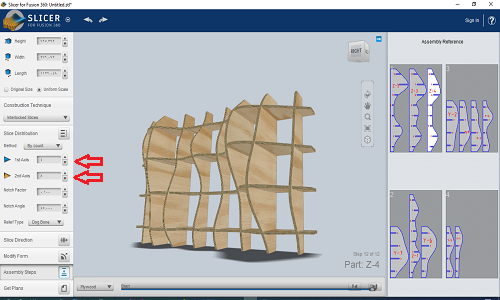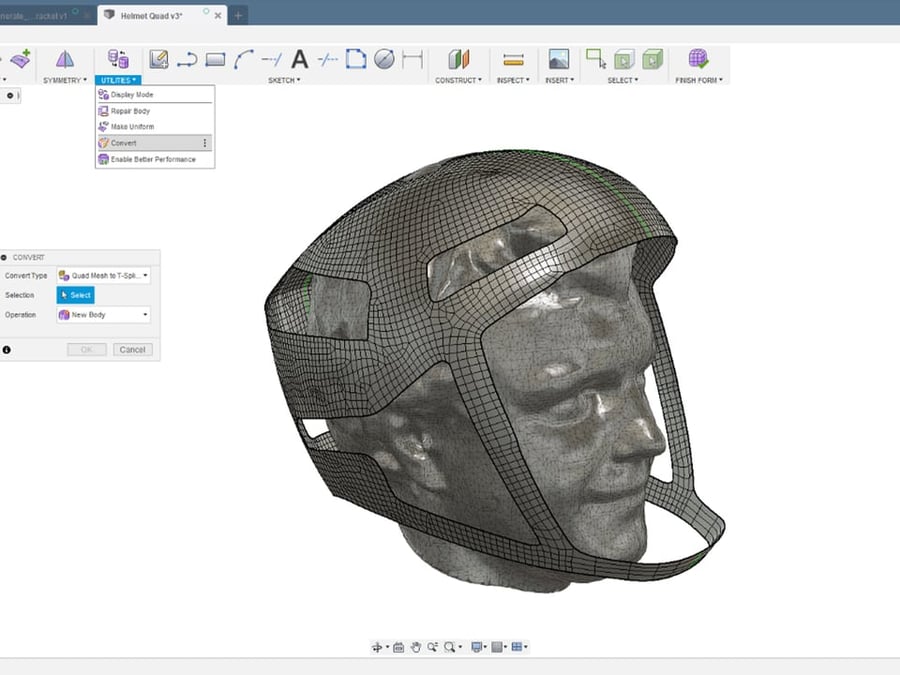
My point is your recognizing the problems, you know why it failed. Circular profiles are hard to print 😉įor try to explain some about the modifiers, but first just want to mention you are absolutely correct about the solid infill, the to much heat to much plastic, the model shape, and your correct about the layer heights, you might also have noticed that at one point the OP had a layer height of 0.1 set with 100% infill (that was never going to work) well, it could, but it would be a ridiculously long unnecessary print. Generally, I know better than to try and print a shape like this - but it is good to learn that it is possible to overcome these types of overhangs. 2mm layer height caused the threads to start failing due to the overhangs there - and I noticed you added a modifier over that part of the print as well - will dig into what you did there. I have taken a slightly different approach - I noticed that the dense infill settings were causing the ABS to overheat and start melting during the print, so I reduced the infill density and changed it to gyroid - with only one of those battery covers on the print bed, the heat is building up too much in the print due to the dense infill.

I have only recently run into the concept of modifiers - is that what you used here? Is there a good overview of the click sequence used to create a modifier online here? Some understanding of why you added those layer and perimeter sets as you did would be wonderful walk through.

15, but I want to see if my setting changes help get you dialed in better than grafting a cylinder onto the print. I will be able to start the print in about 30 minutes from now (12:30 PM PST). For a battery door, I wouldn't think you need the precision to get the threads to work, but I'll give it a go at. I also reset the first layer height and layer height to the defaults for the layer height (.15 mm). I have reset the temp settings to default for the generic ABS profile - I've had decent outcome with its default settings. I'm also increasing perimeters to 3, so there is some better wall integrity. ABS is very stiff material - so getting the separation distance for supports dialed in is the bulk of this print. 25mm - the interface should not be too hard to separate in a finishing step. I'll enable auto-generate support and set the separation distance to. The profile settings were a bit off - so I'm adjusting them. What you added is not what I would consider supportĪdding that cylinder threw me off until I checked it in PS and then deleted that. The part prints with an angled bottom and a very slight curve on top. Since I'm going to sand this to get a good finish, I'm ok with some defects caused by the supports but I need the profile curve to come close to the design. Nothing I've done has helped the quality or shape of the bottom side of the curved surface, even with supports. The bed stayed at the correct temperature throughout the print. I don't use an enclosure but I don't have any drafts either. I did some variances on that but nothing helped. I mostly used the bet at 100 for the 1st layer and 110C for all others. Previous attempts were at 220, 230, 240C. Finally I attached pictures from the last attempt. Since the forum only allows upload of media files I've attached screen captures from slicer as well as some from fusion 36o to show the designed profile.

Box says print temp is 220C-250C, Bed temp 100C-110C. I changed from PLA to ABS for this part to get better impact resistance. Very poor print quality on underside of ABS even with supports


 0 kommentar(er)
0 kommentar(er)
